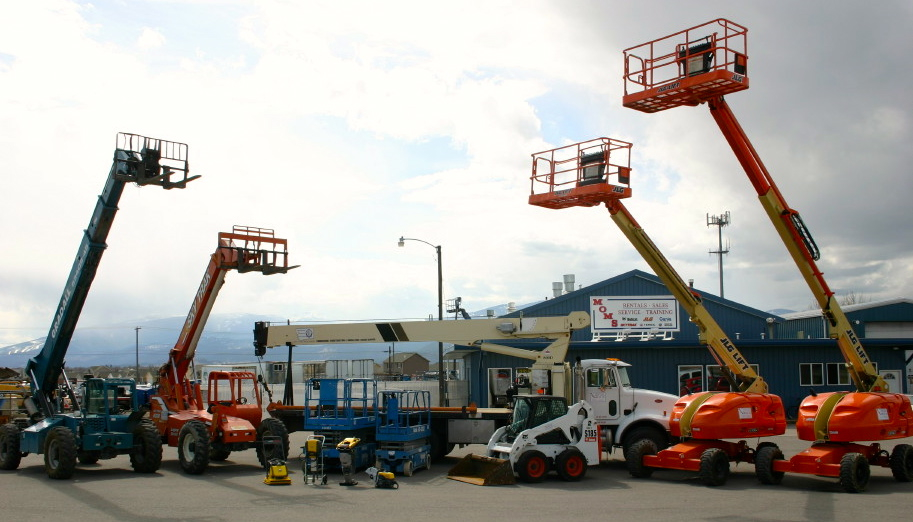Heavy Equipment Rental: Big Machinery for Any Type Of Construction Project
Heavy Equipment Rental: Big Machinery for Any Type Of Construction Project
Blog Article
Maximize Your Spending Plan by Recognizing the Expenses Related To Building And Construction Devices Rentals
Recognizing the full scope of expenses linked with construction devices services is crucial for maximizing your budget plan. What approaches can be employed to effectively handle these costs and make sure an extra reliable rental experience?
Overview of Rental Expenses
When considering building and construction devices rentals, understanding the connected costs is extremely important for efficient budgeting and task planning. Rental prices can vary substantially based on a number of factors, including tools type, duration of service, and location. The preliminary rental cost typically mirrors the equipment's market demand and its linked functional capabilities, affecting the total expense.
Along with the base rental price, ancillary expenses might arise, such as transportation costs, gas surcharges, and maintenance fees. It is vital to represent these added expenses to precisely examine the complete price of renting devices. Moreover, the rental duration can influence pricing; longer rentals may get affordable prices, while temporary leasings might incur higher everyday fees.

Breakdown of Rental Rates
A thorough understanding of rental prices is crucial for service providers and job managers aiming to maximize their spending plans. Rental prices for building equipment typically include a number of components, consisting of base prices, time-based fees, and use costs.
Base rates are the core charges linked with the leasing of the equipment, usually established by the type and size of the equipment. These rates can differ substantially, influenced by factors such as devices demand, schedule, and regional market fads. Time-based fees, which might be daily, weekly, or monthly, offer to accommodate various project timelines and rental periods.
Additionally, rental prices may consist of usage costs, which apply when tools is used past a specified limit, guaranteeing that the rental company can represent wear and tear. Seasonal need fluctuations can likewise influence rental rates, with peak building and construction seasons commonly commanding greater prices.
Additionally, understanding the rental business's plans concerning upkeep and insurance can supply further insight right into the overall expense framework. By analyzing these elements, service providers can make informed choices, making sure the option of rental equipment straightens with both job needs and budget plan restraints.
Added Costs to Consider
Understanding the complexities of extra charges is vital for service providers to handle their total service expenditures properly. Past the typical rental prices, numerous supplementary costs can dramatically influence the complete price of devices leasing. These charges typically include shipment and pickup charges, which can vary based upon range and logistics included in delivering the devices to and from the task site.
Moreover, some rental click here now firms might impose fuel additional charges if the tools is returned with less fuel than when rented out. It is likewise vital to understand potential cleansing charges, particularly for specialized tools that calls for thorough upkeep after use.

Thoroughly examining the rental agreement and making clear these extra costs in advance can help specialists avoid unanticipated expenses and make certain that budgets stay intact throughout the project lifecycle.
Repair And Maintenance Costs
Regular repair and maintenance More Bonuses costs are often ignored factors that can substantially influence the general price of construction devices services. When renting devices, it is crucial to think about not just the rental fees however likewise the possible costs connected with maintaining the equipment in optimal operating condition.
Several rental companies include fundamental upkeep as component of the rental agreement; nevertheless, a lot more unanticipated breakdowns or comprehensive repair services can bring about added expenses. It's important to examine the rental agreement very carefully to recognize what upkeep solutions are covered and what duties fall on the renter.
Furthermore, equipment that is not properly maintained can cause inadequacies at work website, possibly boosting and triggering delays job costs. To reduce these risks, it is recommended to conduct regular inspections and keep open interaction with the rental copyright pertaining to any kind of problems that occur during use.
Insurance Policy and Responsibility Expenses
Insurance this hyperlink coverage and liability prices are critical parts that can substantially affect the overall expenditure of building and construction devices rentals (equipment rental company). These prices guarantee that both the rental company and the customer are safeguarded from possible economic losses occurring from crashes, damages, or burglary during the rental duration

In addition, clients must recognize any type of deductibles or exemptions in the insurance policy, as these can influence potential out-of-pocket costs. Recognizing the terms and conditions of any type of insurance policy coverage is crucial to stay clear of unexpected expenses. Inevitably, budgeting for insurance and liability expenses can aid make sure a smoother rental experience and protect against monetary threats associated with construction tasks.
Conclusion
In conclusion, a comprehensive understanding of the prices linked with building equipment rentals is crucial for reliable budget plan management. Ultimately, educated decision-making concerning equipment services adds to the overall success of building and construction ventures.
Rental costs can differ substantially based on a number of factors, consisting of devices kind, duration of rental, and area (forklift rental). The rental period can influence prices; longer rentals might certify for reduced prices, while short-term services may sustain higher day-to-day fees
By performing complete research and engaging with respectable rental companies, contractors can properly navigate the complexities of rental rates, ultimately maximizing their monetary sources.
Beyond the typical rental rates, different supplementary fees can dramatically affect the complete price of devices leasing. Rental firms typically give liability insurance coverage that covers injuries to third parties or damages to residential or commercial property, while devices damages insurance can cover the expense of repair services or substitute if the rented equipment is damaged.
Report this page